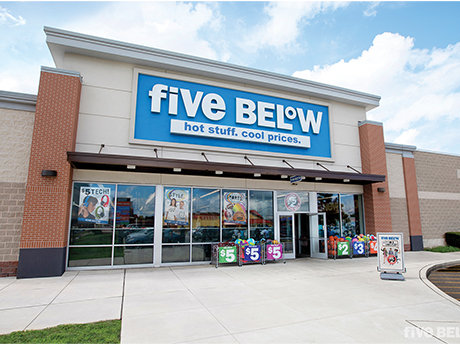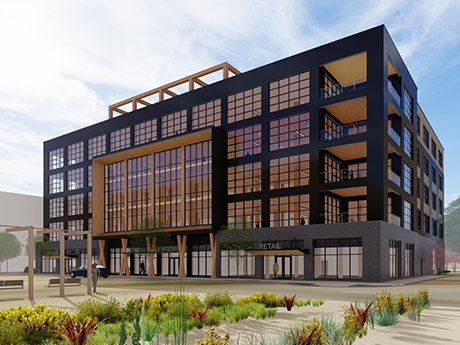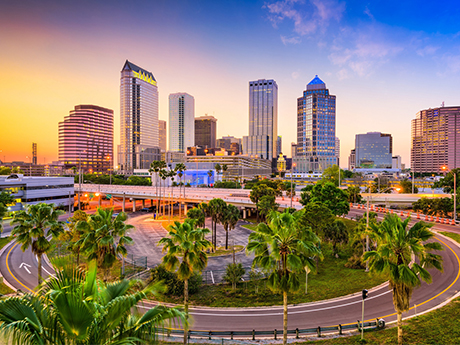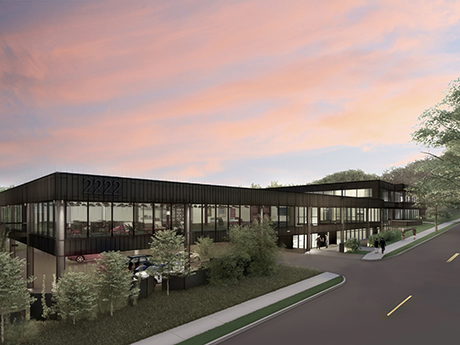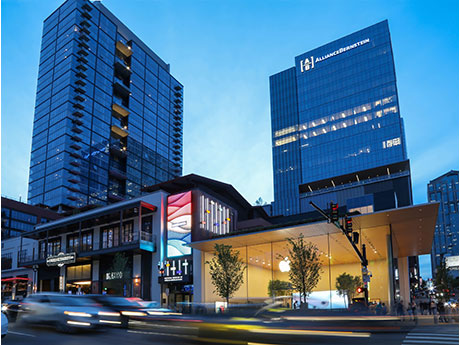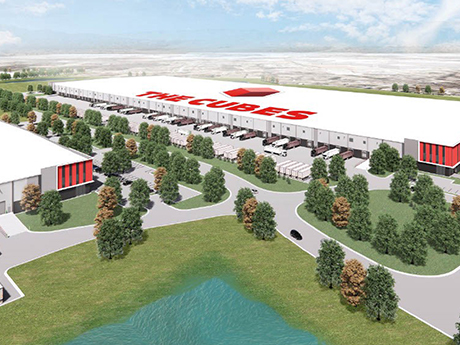Retail is not dead. In fact, coming out of COVID-19, retail is arguably the strongest that it’s been in many years. According to S&P Global Market Intelligence data, in 2022 we saw a 13-year low in retail companies filing for bankruptcy. Here in Baltimore, we’re seeing extremely low vacancy rates and steady demand, which in turn, is cultivating a competitive environment. However, despite the challenges that retail has faced over the past several years, its resilience is where we continue to find plenty of reasons to be optimistic. A look back In March 2020, the phones stopped ringing and businesses shuttered for what was anticipated to be a few short weeks. We soon came to find that was not the case. Retail did struggle, significantly in some cases. Restaurants, service-based businesses, soft goods, fitness, entertainment and experiential concepts amongst many others, whether large corporate-owned or mom-and-pop users, struggled to stay afloat. And many did fail. Space came back on the market and concepts dwindled at an uncanny pace. But the so-called “retail apocalypse” — a common phrase that was originally coined because of the increased popularity of e-commerce — was, again, proved to be hyperbole. Retailers sought ways to enhance …
Southeast Market Reports
Unprecedented development is underway across the Baltimore metro area with more than $6.6 billion of infrastructure and major development projects in the pipeline, and office-using employment remains strong. More than 574,000 people are employed in a diverse set of employment sectors that require offices, including professional and business services, government, financial services and tech and information. The past year, unemployment fell in each Maryland submarket, with Baltimore dropping 140 basis points, which is similar to the national unemployment rate that decreased 150 basis points. In the second half of last year, several public sector agencies relocated into the Central Business District (CBD) from Midtown and Mount Vernon locations, pushing net absorption positive and vacancy negative. This helped state and local government tenants lead all sectors in leasing activity in the fourth quarter of 2022, accounting for 56 percent of all leases signed. The Maryland Department of Health signed the largest lease of the quarter with its new 463,000-square-foot lease at 300 N. Greene St. Other State of Maryland relocations include Department of Labor, Office of the Comptroller, Department of Budget & Management, Department of Planning and Department of Aging. Combined, these state government tenants leased 761,000 square feet in the …
Once bypassed by national developers and investors for larger, metropolitan cities like Miami, the real estate community is now realizing what locals have known for years: Tampa is trending. Tampa Bay’s recognition as one of the country’s top places to live has trickled into the region’s office market, which as of the first quarter of the year, has continued to reap the benefits. While some credit the Tom Brady effect to Tampa’s rise into the national spotlight, the Tampa Bay region is seeing growing demand in other economic sectors beyond sports, including housing, business and leisure. In fact, Time Magazine just featured Tampa as one of only four U.S. cities in its highly coveted 2023 list of the “World’s Greatest Places.” Flurry of activity to start 2023 For the first time in five quarters, the Tampa Bay office market recorded positive absorption of more than 55,000 square feet thanks to more companies moving into space rather than vacating it, JLL’s first-quarter Office Insight Report for 2023 shows. This can be largely attributed to Reliaquest’s move into its 140,000-square-foot headquarters located at Thousand & One Water Street, where it is currently occupying 120,000 square feet, and which made up the lion’s …
When we wrote about the Birmingham multifamily market last year, the main trends were job growth and in-migration to not only the Birmingham market, but the Sun Belt as a whole. The growth was described as “unprecedented,” which it certainly was, and investor optimism could not have been higher as cap rates plummeted and property performance continued to thrive. Since then, the 10-year Treasury yield has risen nearly 200 basis points, inflation experienced nearly 6.5 percent growth last year and there was a more cautious optimism going into the fourth quarter of 2022. But what if we are not hitting a stopping point, rather moving back into a cycle of normalcy? Amongst the many major indicators for 2023, the common theme appears to be uncertainty. Many notable factors such as debt and rising insurance costs have been a sounding board for this skepticism in the market. 2021 and 2022 proved to be nothing short of record-breaking in the multifamily sector. For Birmingham, our outlook is that the solid foundation it has built over the past few years, and the post-pandemic recovery boom it experienced, will show that the city is still poised for growth and has been fortunate to not …
Before we look at the current happenings in the Birmingham industrial market, it is worth glancing into the rearview mirror of the last 24 months or so. 2021 and 2022 saw the delivery of 10 notable industrial build-to-suit projects. Some were announced in 2020 before pricing surges. The last delivery of these projects was completed in fourth-quarter 2022, an automotive project on the west side for Lear Automotive Seating oriented toward Mercedes-Benz. This unprecedented streak of projects totaled 3.3 million square feet. In addition to Lear, tenants included: Lowes, Mercedes-Benz, Motion Industries, TSF Sportswear, Samuel, Son & Co., Amazon (two) and FedEx Ground. Interestingly, two of these facilities are now available for sublease and were never occupied by the tenant. And as of this writing, there is not a single industrial build-to-suit announced or under construction. What did follow the noted build-to-suit wave were six speculative (or partial speculative) projects. The first one delivered — the first phase of Crossroads Commerce Center in the Central submarket — spanned 186,000 square feet, and the twin second phase was recently completed. The two phases are now 75 percent occupied, demonstrating market demand shown in other Southeastern markets in mid-2022 and prior. In …
Birmingham’s office market is facing many of the same challenges our peer markets are encountering. Lingering economic uncertainties have created a very cautious environment. Most tenants and business owners I speak with are either cautiously pessimistic or cautiously optimistic about the economy. Regardless of which side is right, economic projections for 2023 have caused a general slowdown in deal flow as decision makers have become more guarded with business decisions and commitment levels. Is there cause for concern in Birmingham? Historically, Birmingham’s office market has remained stable during challenging times, dodging the extreme highs and lows as markets ebb and flow nationwide. Birmingham’s office market consists of approximately 19 million square feet of multi-tenant inventory across five submarkets, four of which have Class A inventory. Fundamentals, subleases As of fourth-quarter 2022, the occupancy rate for Birmingham’s office market sits at 83.8 percent. For the same period over the last five years, the occupancy rate has only slightly fluctuated year-over-year, ranging from 86.1 percent in fourth-quarter 2018 to 83.8 percent in fourth-quarter 2020. The current rate is at 83.8 percent, illustrating consistency throughout a very problematic time for the office sector. Birmingham’s office sublease inventory is rising, but again, not to …
Over the course of this year, Greenville-Spartanburg’s industrial market is expected to continue its overall upward trajectory with increasing rental rates, record-low vacancy rates and ongoing tenant demand. The fundamentals of Upstate South Carolina’s industrial market are among the strongest anywhere in the country right now due to a myriad of cylinders on which it is simultaneously firing. The market’s plethora of demand drivers include e-commerce users, manufacturing, the automotive industry and the draw of the Inland Port located in Greer. To understand the full picture, however, it’s important to also consider what the Greenville- Spartanburg market is not firing on. The market is not stifled by unions, high regulation or the lack of viable sites, available buildings and utility infrastructure some other markets have to contend with. An important factor affecting current absorption is multiple fourth-quarter tenant occupancy dates being pushed from fourth quarter of 2022 to first quarter of 2023. There was 17.9 million square feet of industrial space under construction at year-end 2022, with approximately 4 million square feet of that already preleased but not yet delivered. Those deliveries in early 2023 will naturally lead to positive absorption and help rebalance the market. A variety of industrial …
As someone who has lived here for the past decade, I regularly hear phrases like, “It’s an exciting time to live, work and play in Nashville.” I love hearing those comments and am honored that our team plays a role in the city’s growth. However, is that optimism cooling, or is Nashville uniquely primed for continued success in the multifamily space? Following a white-hot streak of rent growth and transaction velocity during the economy’s resounding pandemic recovery, Nashville joins the rest of the nation in a transitionary period influenced by interest rate hikes and inflation. But for many reasons, our city is better prepared than most. Approximately 130,000 residents have moved to Nashville in the past five years, resulting in some of the highest apartment construction rates in the country. In fact, according to Marcus & Millichap’s Research Services division, Nashville is expected to take over the top spot for inventory growth nationwide in 2023, with roughly three-fourths of the metro’s new construction located in Nashville proper. While those numbers are certainly impressive, Marcus & Millichap’s National Multifamily Index, which ranks major markets based on forward-looking economic indicators, places Nashville in only the No. 28 position for 2023. This is …
Nashville’s economy experienced some of the healthiest growth in the nation in 2022, with an annual job growth rate of 5.8 percent, exceeding the U.S. growth rate of 4.1 percent, based on data from Oxford Economics. Nashville also received high marks from the Urban Land Institute and PricewaterhouseCoopers, ranking as the No. 1 Market to Watch in their 2023 Emerging Trends in Real Estate report. The report credited Nashville’s tremendous and sustained population growth, and its economic diversity. Referred to as a “Supernova,” Nashville grew by an average of 5 percent since 2019 — four times faster than the national rate — due to rapid net in-migration. These fundamentals have helped boost the retail market in Nashville over the last several years. Post-pandemic, market-wide retail vacancy decreased to 3.3 percent at the end of 2022, which is two percentage points less than the rate at year-end 2020, but in line with the 15-year record low mark set in 2018. While Nashville’s retail sector took a hit along with others across the nation, it continues to rebound and perform due to a rise in dense communities where developers and owners are being strategic and thoughtful in retail curation. As such, the …
Nashville’s industrial market continues to see strong demand going into 2023. In fact, more than 1.7 million square feet of leasing activity was recorded throughout fourth-quarter 2022, bringing the year-to-date transaction volume just shy of an impressive 8.8 million square feet. Even overall vacancy sat at 3 percent during the final quarter of 2022, and while that was a slight increase compared to the previous quarter, it still was 30 basis points below the national vacancy average. Despite a recessionary environment and uncertainty of what’s next in the commercial real estate sector, Nashville’s industrial market is uniquely positioned for the upcoming year. As Nashville’s industrial market still experiences growth, there are several macro-economic trends impacting it that are worth keeping an eye on, such as e-commerce and third-party logistics demand. Interest rates have also risen, making it very tricky to value property and cap rates due to the debt markets. This has triggered limited investment activity from buyers and sellers alike across all property types, including industrial. Industrial developers are also being more cautious as rising interest rates have increased construction costs. Many developers and investors have purchased land or have land under contract, for example, but are waiting for …


